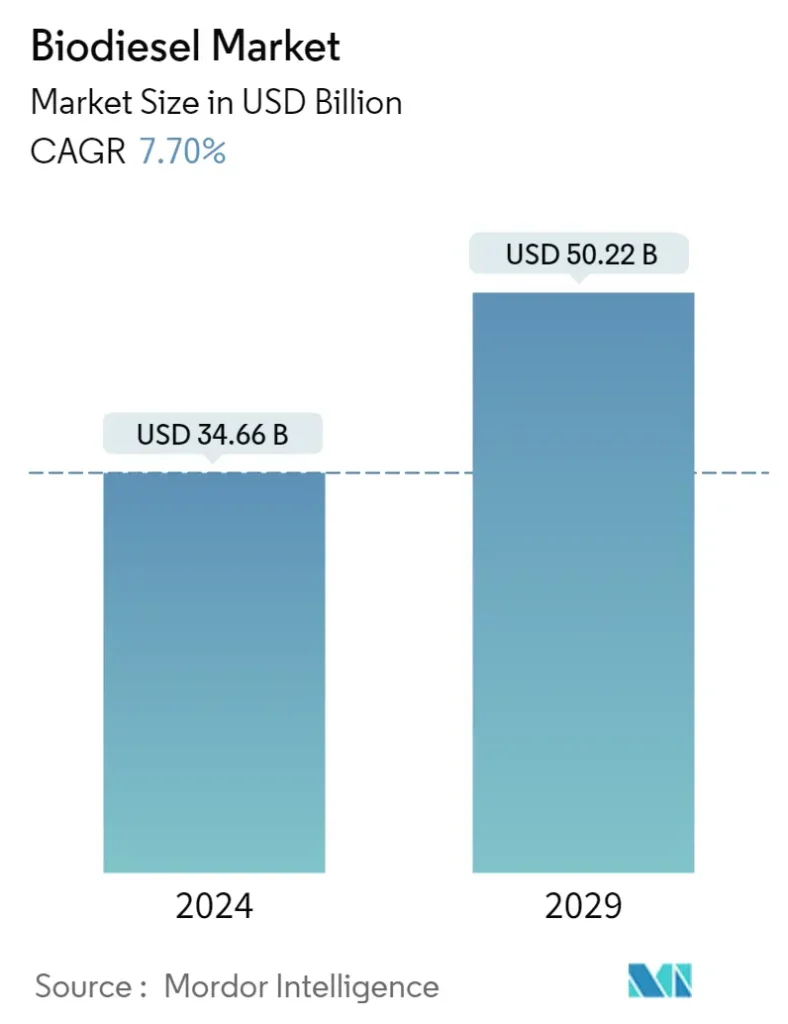Understanding Biodiesel
Biodiesel is a biofuel produced from biological elements such as vegetable oils and animal fats. Unlike fossil fuels, it is renewable and produces less greenhouse gas emissions. It is mainly used as a substitute for diesel in internal combustion engines.
The main components of biodiesel are monoalkyl esters of long-chain fatty acids derived from vegetable oils or animal fats. One of the most common variants of biodiesel in Europe is Diester, also known as dimethyl ester. Diester typically comes from oils such as rapeseed, soybean, or sunflower.
The benefits of using biodiesel include:
- Reduction of CO2 emissions, which helps combat climate change
- Biodegradability, thus reducing environmental impact in case of spillage
- Non-toxicity to humans and animals
- Reduced energy dependence on fossil fuels
The production of biodiesel involves a process called transesterification, where oils are treated with an alcohol (usually methanol) in the presence of a catalyst to form methyl esters and glycerin. This process enhances the properties of the initial oil, allowing it to operate effectively in diesel engines.
It is important to note that biodiesel can be used pure (B100) or blended with fossil diesel in various proportions, the most common being B20, which contains 20% biodiesel and 80% fossil diesel. Low blends (like B5) are also widespread and allow a smoother transition for vehicles not specifically adapted to pure biodiesel.
Sustainable development initiatives and public policies increasingly promote the integration of biodiesel into our energy systems, given its substantial environmental and economic benefits.
Origin of Biodiesel
Biodiesel is a biofuel made from organic materials like vegetable oils and animal fats. One of the most common types of biodiesel is diester, primarily made from rapeseed or sunflower oil. This next-generation biofuel reduces greenhouse gas emissions and offers an alternative to traditional fossil fuels.
The production of biodiesel involves a process called transesterification, where vegetable oils are converted into methyl esters of fatty acids and glycerol. The benefits of biodiesel include its biodiversity, renewability, and ability to be used in existing diesel engines without major modifications.
Using biodiesel like diester helps to:
- Reduce CO2 emissions
- Decrease dependence on fossil fuels
- Support local agriculture by using crops like rapeseed and sunflower
The origins of biodiesel date back to the late 19th century when Rudolf Diesel, the inventor of the diesel engine, experimented with vegetable oils as fuel. He demonstrated in 1900 at the Paris World Expo that his engine could run on peanut oil. However, it was not until the 1970s, during the energy crisis, that interest in biofuels significantly increased.
With growing concerns about climate change, biodiesel has become a popular option for a cleaner and more sustainable energy transition. Today, many countries encourage the use of biofuels like diester through incentive policies and favorable regulations.
Biodiesel Production Process
Biodiesel is a renewable fuel produced from vegetable oils or animal fats through a transesterification process. This eco-friendly alternative helps reduce greenhouse gas emissions and dependence on fossil fuels.
Diester is a brand of biodiesel manufactured mainly in France, often used in diesel engines. Composed primarily of methyl esters of fatty acids, Diester is blended with conventional diesel in various proportions, thus helping to reduce pollutant emissions.
The biodiesel production process is relatively simple but requires several crucial steps:
- Raw material collection: Used vegetable oils, animal fats, or crop oils are collected.
- Pre-treatment: The raw materials are filtered and purified to remove impurities.
- Transesterification: The oils or fats are mixed with an alcohol (usually methanol) in the presence of a catalyst to produce methyl esters and glycerol.
- Refining: The crude biodiesel is purified to remove any remaining traces of methanol, catalysts, and impurities.
- Distribution: The biodiesel is then tested to meet quality standards before being distributed to consumers.
The use of biodiesel presents several environmental benefits. In addition to reducing CO2 emissions, it also allows for the valorization of organic waste and limits the use of non-renewable fossil resources.
“`
Articles similaires
Thank you!
We will contact you soon.













